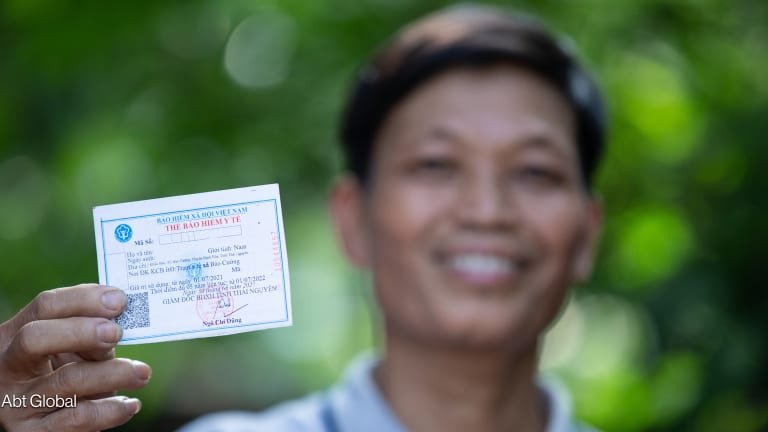
The goal of foreign assistance should be to create the conditions under which it is no longer necessary — a compelling vision articulated by USAID Administrator Mark Green. Yet the specifics of how and when to end U.S. development programs in a country is one of the most fundamental questions for the White House and Congress, as well as the development community. Together we must chart a responsible path for transitioning countries from aid beneficiaries to broader strategic trade and security partners with the United States.
The Modernizing Foreign Assistance Network and over 100 international development nonprofits, faith-based organizations, businesses, and prominent experts have endorsed the following seven clear principles as a guide to achieving this ultimate goal. These seven principles also include useful lessons learned from USAID’s past transitions in practice, noting successes to build on and pitfalls to avoid.
1. Advance country ownership
When USAID closed its mission in Panama in 2012 after a process of consultation with the host country, the first lady of Panama remarked that the “transition, jointly planned and agreed to at high levels,” was a “reflection of progress we have made” together. Like good development programs, good transitions don’t just deliver results; they align with local priorities and strengthen local civil society, government, and private sector capacity to sustain them. Transition planning and implementation should be a joint exercise with partner countries and coordinated with Congress, U.S. agencies, and donor organizations.
2. Determine transition readiness by development progress
Responsible transitions cannot be based on arbitrary budget targets and timelines. When considering transition readiness, the first place to look is at national and subnational indications of development progress: Is the country fostering inclusive economic growth, governing capably, and protecting human rights at the national and local levels? For all groups of people? For example, although Panama had achieved significant development progress in the 2000s, for several years prior to USAID’s mission closure, USAID-funded programs specifically focused on government and civil society capacity-building to help the country sustain gains post-transition. As experts at the Center for Global Development recently noted, development indicators won’t automatically determine transition, but they can indicate that it is time to talk about what’s next.
3. Mobilize domestic resources for development
In many developing countries, there is untapped potential for governments to raise and spend their own public resources effectively for development. As development organizations, it is critical to encourage the Trump administration and Congress to scale up support for these opportunities and create a deeper pool of local resources for development. In 2005, as part of USAID’s ongoing work with El Salvador (a country not ready to transition), the agency invested an initial $5 million to help strengthen the country’s tax system. By 2013, the government of El Salvador had collected an additional $2.4 billion in revenue and significantly increased social-protection spending. U.S. aid must be more aggressive and systematic in making such investments that can put countries and their citizens closer to a time beyond aid.
4. Catalyze private sector investment for inclusive growth
There’s a reason why South Korea is the United States’ sixth largest trading partner: a healthy domestic private sector is fundamental to driving broad-based economic growth. Transition plans should consider how to support local and foreign private sector investment. After USAID closed its mission in South Korea in 1980, the U.S.-Korea trade relationship flourished. Today, South Korea’s annual trade exceeds the total amount of U.S. assistance provided to the country since the Korean War.
5. Prioritize transparency, evaluation, and accountability
The transition process should be consultative and transparent — with plans, benchmarks, data, and reports made public. Furthermore, strong feedback loops for monitoring, evaluation, and learning need to be built in and prioritized. As USAID transitioned from Costa Rica in the 1990s, the transition process reportedly suffered from rigid Washington-based directives preventing re-engagement, a rushed timeline for closure, and underfunding of evidence collection and analysis. Successful transitions require a clear and high bar for transparency, analysis, and learning.
6. Safeguard gains and continue progress
No one knows better than the development community that development isn’t linear, and transition planning must be flexible enough to respond to potential shocks, conflict, and backsliding. Transition and post-transition development activities need to be focused where they are most needed to sustain progress and solidify partnerships with the U.S. Here, Costa Rica offers a positive example. As USAID prepared to close its mission, the two countries established an independent organization, the Costa Rica United States Foundation for Cooperation, which still promotes sustainable development and cooperation between the two countries today.
7. Celebrate responsible transitions
Successful transitions are a valuable step to a broader partnership with the U.S. through trade, development finance, security, and more. As USAID ended its programs in Bulgaria in 2007, then-USAID Administrator Henrietta Fore (now at the helm of UNICEF) aptly noted, “Today we are celebrating not just an end, but the beginning of a new kind of relationship. For today we are celebrating your country’s transition from development aid recipient to USG development partner.” Bulgaria’s membership in both NATO and the European Union positions it as a key security and trade partner for the U.S.
For USAID’s development programs to truly end their need to exist, the agency must align its budgets and programming to affect that success. These seven principles, widely endorsed by the development community, offer a thoughtful path toward becoming full partners in the important transition process so that we can fulfill our shared vision of creating the conditions under which development assistance is no longer necessary.








